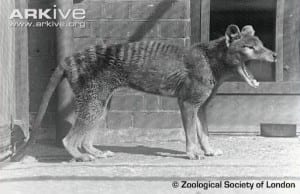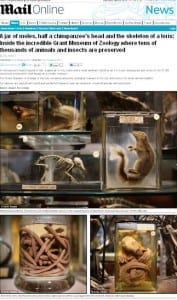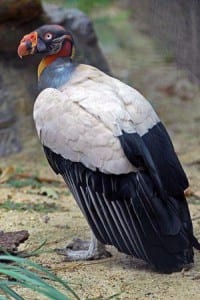Happy 76th Thylacine day
By Jack Ashby, on 7 September 2012
Another year has passed since the last known thylacine – one of the greatest icons of extinction – died of exposure. That makes 76 years today.
We have celebrated the thylacine here at the Grant Museum for some time. We have some fantastic specimens – including one of the only fluid preserved adults (with the added bonus of having been dissected by Victorian evolutionary giant Thomas Henry Huxley), and skeleton from the early 1800s, which belonged to Grant himself. The only recent thylacine-based activity that happened at the Museum was for all our thylacine-geek colleagues to watch The Hunter together, a film about a bounty-hunter hired to collect the last individual for an evil bio-tech company. It was brilliant.
Here on this blog we have told tales of thylacine apparitions, potentially new specimens, the lessons of extinction and the thylacine’s own story, which ended so tragically on 7th September 1936. On 2012’s thylacine day I’m going to spread the net a little further. (more…)
 Close
Close



 Keen-eyed media-hungry readers may well have been seeing a lot of beautiful pictures of the Grant Museum on news websites this week. On Tuesday a photographer – Peter Macdiarmid – visited from
Keen-eyed media-hungry readers may well have been seeing a lot of beautiful pictures of the Grant Museum on news websites this week. On Tuesday a photographer – Peter Macdiarmid – visited from 





